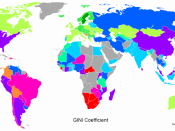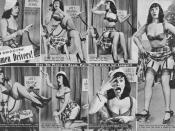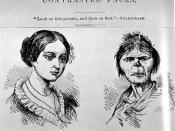Kristy Tsan
Essay 1-Rough Draft
10/1/2014
Classism, Racism, and Other Prejudices
The media can cause a lot of controversies among individuals we consider different. Because of the media's popularity, people tend to absorb products of the media whether it is stereotypes, conspiracy theories, urban legends, etc. Stereotypes are tools the media uses to communicate to the public of a person's "ideal" picture. Connie Wolfe, author of "Stereotypes and Prejudice", states that, "Stereotypes make cognitive processing about our complex social worlds easier and more efficient" (para.7). In the case of the prejudices, the media gives an image to the audience of someone's behavior, physical features, intelligence, and other characteristics based on their background so the public can generalize and place individuals into categories.
Wolfe uses the term aversive racism theory to describe the nonprejudiced self-image. She explains, "Caught in this bind, the theory posits that negative beliefs will have their influence when the norms guiding a situation are weak and people can easily justify their actions on the basis of some determinant other than race; that is, racism is more likely to occur in a subtle form" ("Stereotypes and Prejudice", para.
9). In other words, negative beliefs about race is most often indirect.
Angeline F. Price, who wrote "Working Class Whites", quotes, "The hatred and condescension of the poor seems to be the last available method of prejudice in our society" (para. 14). In other words, she implies the real reason for stereotyping is the bitterness of humankind for the joy of having negative attitudes towards any minority just as long as it is not seen as too prejudiced by the public eye. Another sin of humankind is the comparison of one's own lifestyle to those who have a different way of life in order...


